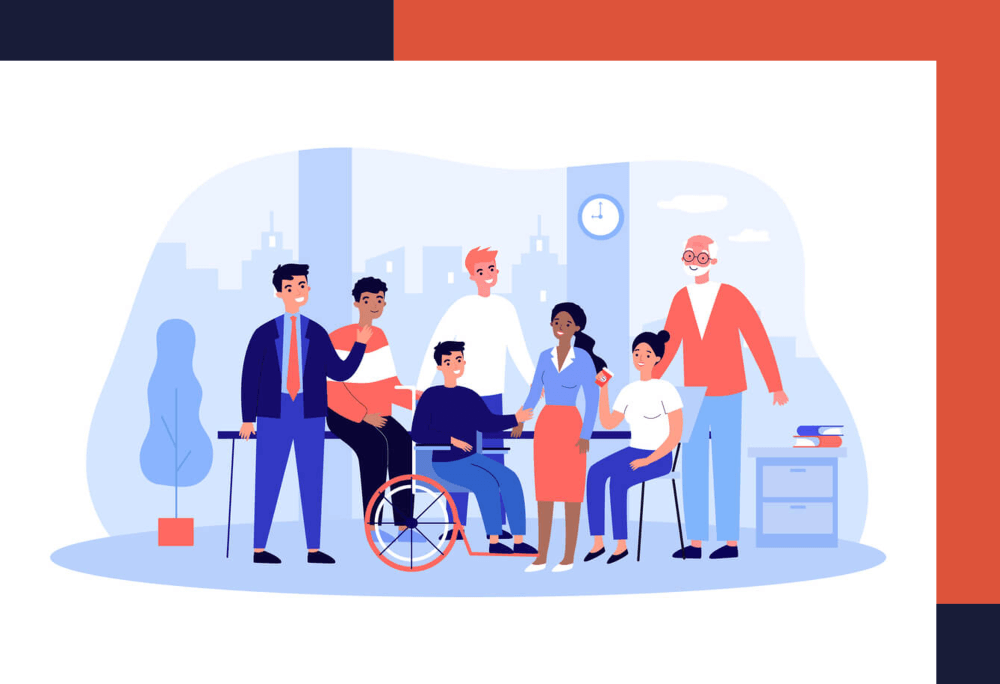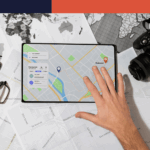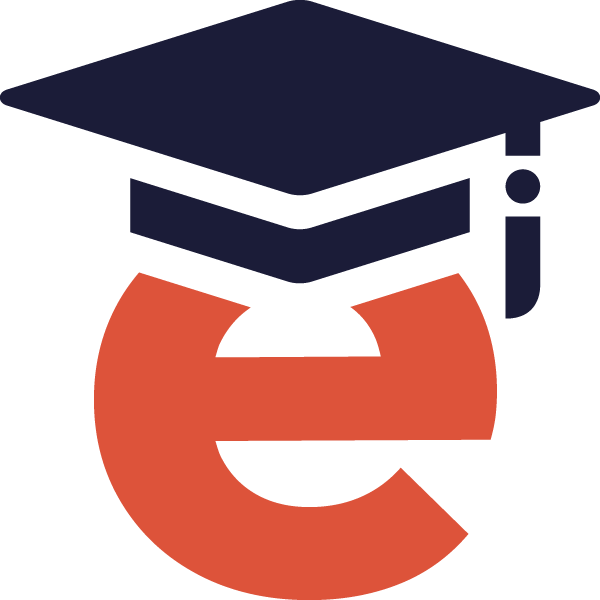From Baby Boomers to Gen Z: How WCAG Drives Organizational Success
Written by Mark Wallach, MBA
Web accessibility compliance, especially following the Web Content Accessibility Guidelines (WCAG), is not merely about meeting regulatory standards; it’s about promoting inclusivity, improving user experience, and driving significant organizational advantages. By embracing WCAG standards, associations can enjoy the following benefits:
- Increased Engagement: Accessibility improves the member experience across all generations, fostering active participation in online and in-person activities.
- Improved SEO Rankings: Enhancements in accessibility align with SEO best practices, boost your site’s visibility, and draw in new members.
- Higher Member Dues Revenue: Members who feel included and supported are more likely to renew their memberships across all age groups.
- Enhanced Non-Dues Revenue: Digitally accessible, user-friendly platforms facilitate member access to paid offerings like events, certifications, and legacy programs.
By adopting WCAG standards, associations can enhance engagement across all generations—Baby Boomers, Gen X, Millennials, and Gen Z—while improving SEO, attracting new members, and increasing member retention, dues, and non-dues revenue.
Actionable Steps to Improve Accessibility
Here’s how each generation benefits and contributes to overall organizational success, along with actionable steps your association can take to improve accessibility for each generation:
 Accessible Content for Baby Boomers
Accessible Content for Baby Boomers
- What It Means: Baby Boomers, who often face age-related challenges such as declining vision or mobility, benefit from features like larger fonts, high-contrast designs, and closed captioning.
- SEO Benefit: Improved readability and usability, lower bounce rates, and extend the time spent on the site, enhancing SEO rankings.
- Impact on Engagement and Revenue:
- Engagement: Accessible features enable Baby Boomers to participate actively in events, webinars, and online forums.
- Dues Revenue: Easy access encourages member retention, which increases the member’s lifetime value through continued membership renewals.
- Non-Dues Revenue: Boomers are more likely to attend events or donate to legacy programs when accessibility is prioritized.
- Action Step: Add Closed Captions to All Videos
- Process: Generate captions for videos using tools like YouTube’s automatic captioning or professional transcription services. Upload the captions and ensure they are accurate and synced to the audio. This makes video content accessible to those with hearing impairments.
 Optimized Platforms for Gen X
Optimized Platforms for Gen X
- What It Means: Gen X, balancing demanding professional and personal lives, appreciates efficient and intuitive platforms that save time. Features such as keyboard navigability and organized content facilitate seamless interaction.
- SEO Benefit: Enhancing usability improves site navigation and keyword relevance, making your site more appealing to search engines.
- Impact on Engagement and Revenue:
- Engagement: Easy access to professional development resources and networking opportunities keeps Gen X engaged.
- Dues Revenue: Tailored resources encourage loyalty and renewal.
- Non-Dues Revenue: This group will likely invest in certifications, courses, and mentorship opportunities.
- Action Step: Ensure Keyboard Navigability
- Process: Test your website to ensure that all interactive elements, including forms, menus, and buttons, can be accessed using a keyboard. Utilize tools like the User Way Accessibility Checker to detect issues.
 Seamless Digital Experiences for Millennials
Seamless Digital Experiences for Millennials
- What It Means: Tech-savvy Millennials anticipate a seamless digital experience. Mobile optimization, clear links, and WCAG compliance foster an interface that aligns with their preferences.
- SEO Benefit: Mobile-friendly and accessible websites have higher rankings in search results, particularly for voice search users. When millennials say, “Hey Google” or “Hey Siri,” organizations that rank in the top three will be the sites they visit.
- Impact on Engagement and Revenue:
- Engagement: Millennials engage more with accessible, mobile-friendly platforms that deliver value on the go.
- Dues Revenue: They will likely advocate for and stay loyal to organizations that reflect their values.
- Non-Dues Revenue: Offerings like webinars and e-learning modules crafted with accessibility attract Millennials seeking career advancement.
- Action Step: Optimize for Mobile Devices
- Process: Implement responsive web design to guarantee that your website adjusts seamlessly to different screen sizes. Evaluate mobile compatibility with tools such as Google’s Mobile-Friendly Test and address any issues to improve usability on smartphones and tablets.
 Inclusive Accessibility for Gen Z
Inclusive Accessibility for Gen Z
- What It Means: Gen Z, the most digitally native generation, relies significantly on mobile devices and voice search. High-performing, WCAG-compliant websites fulfill their expectations for inclusivity and speed.
- SEO Benefit: Quick and accessible sites tailored for voice search guarantee that your association is visible when Gen Z seeks resources.
- Impact on Engagement and Revenue:
- Engagement: Inclusivity fosters trust and loyalty among Gen Z members.
- Dues Revenue: They’re more likely to join organizations that prioritize accessibility.
- Non-Dues Revenue: Gen Z members seek affordable, high-value options like certifications and entry-level events.
- Action Step: Use Descriptive Link Text
- Process: Replace vague phrases like “Click here” with meaningful text that describes the link destination. For example, use “Learn more about our accessibility initiatives” instead of “Click here.” This improves SEO and user experience.
The Role of Accessibility Professionals
While these actions lay a solid foundation, hiring an accessibility professional can streamline and enhance your efforts. These experts perform comprehensive audits, suggest tailored solutions, and ensure your site complies with WCAG standards. They also remain current with evolving guidelines and technologies, saving your team time and effort while ensuring compliance. Collaborating with a professional reduces legal risks and positions your association as a leader in inclusivity within the industry.
Taking Accessibility to the Next Level
WCAG compliance isn’t merely about fulfilling legal requirements—it presents a strategic advantage. By enhancing accessibility, your association can address the distinct needs of Baby Boomers, Gen X, Millennials, and Gen Z while boosting engagement, increasing revenue, and reinforcing its reputation as an inclusive, forward-thinking organization. With these improvements and the guidance of accessibility professionals, you’re not just upgrading your website—you’re investing in your association’s and its members’ future.
About the Author
Mark Wallach, MBA, is CEO Emeritus of Engagement Mobile Strategies and a leading expert on innovative mobile technology in the association space. With over a decade of experience helping associations maximize member engagement and retention, he specializes in bridging generational gaps through accessible technology solutions. Based in Ashburn, Virginia, Mark advises organizations on strategic planning, collaborative partnerships, and digital transformation that drives measurable results.
About eLearningDOC
Quality assurance plays a vital role in our online course development process. Before any materials are developed and delivered, our Executive Director of Quality Assurance (EDQA) conducts a thorough review to ensure they meet our high standards for quality and accessibility. The EDQA collaborates closely with our instructional designers to identify and rectify any errors, which is essential for the effectiveness of the instructional design process and ensures that our designs comply with WCAG standards. Additionally, our team members hold certifications from Quality Matters™ (QM) and the International Association of Accessibility Professionals (IAAP) as Professionals in Accessibility Core Competency (CPACC).
Contact the DOC to learn how we can help you meet WCAG guidelines and expand your reach across all generations!








